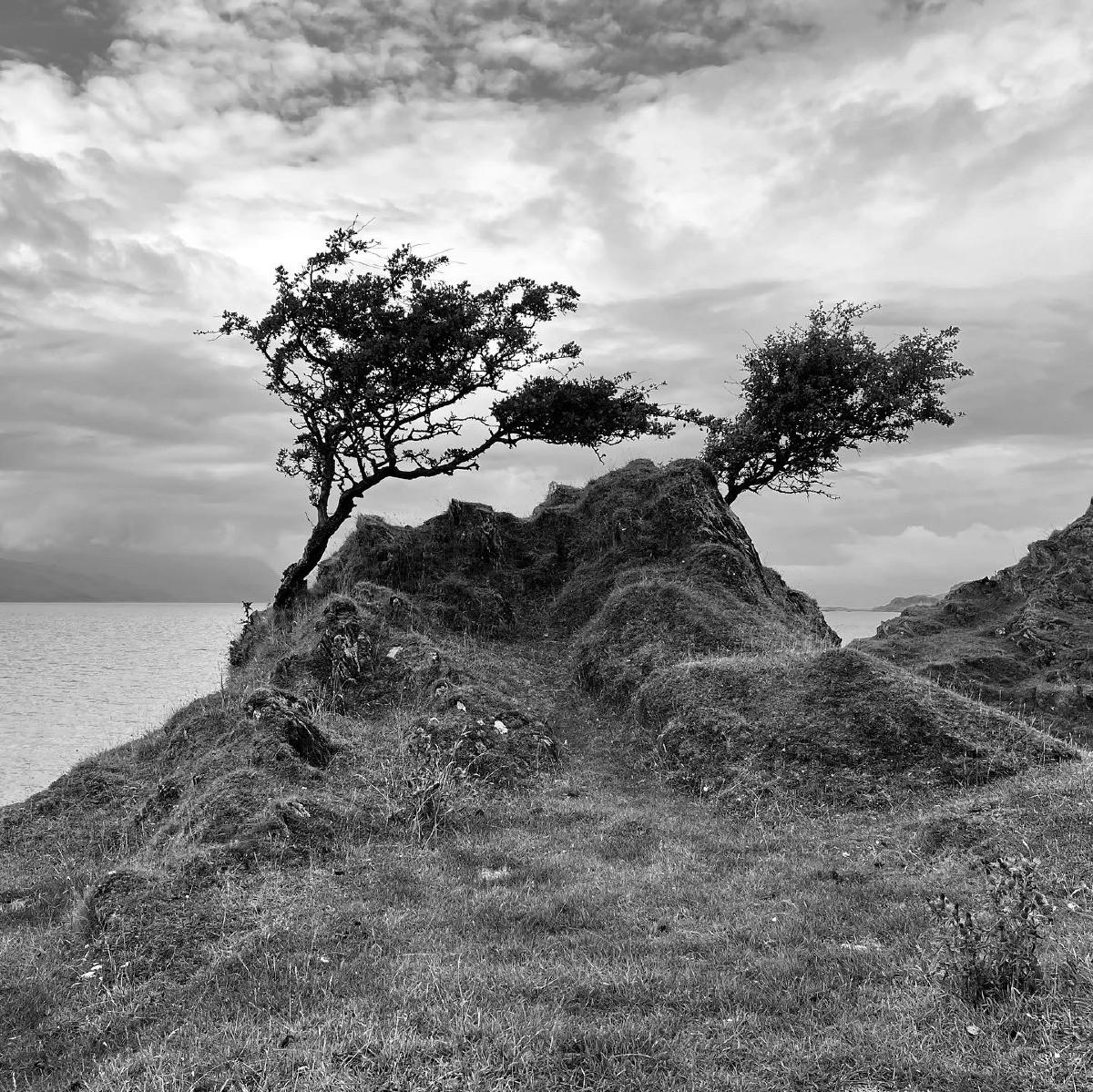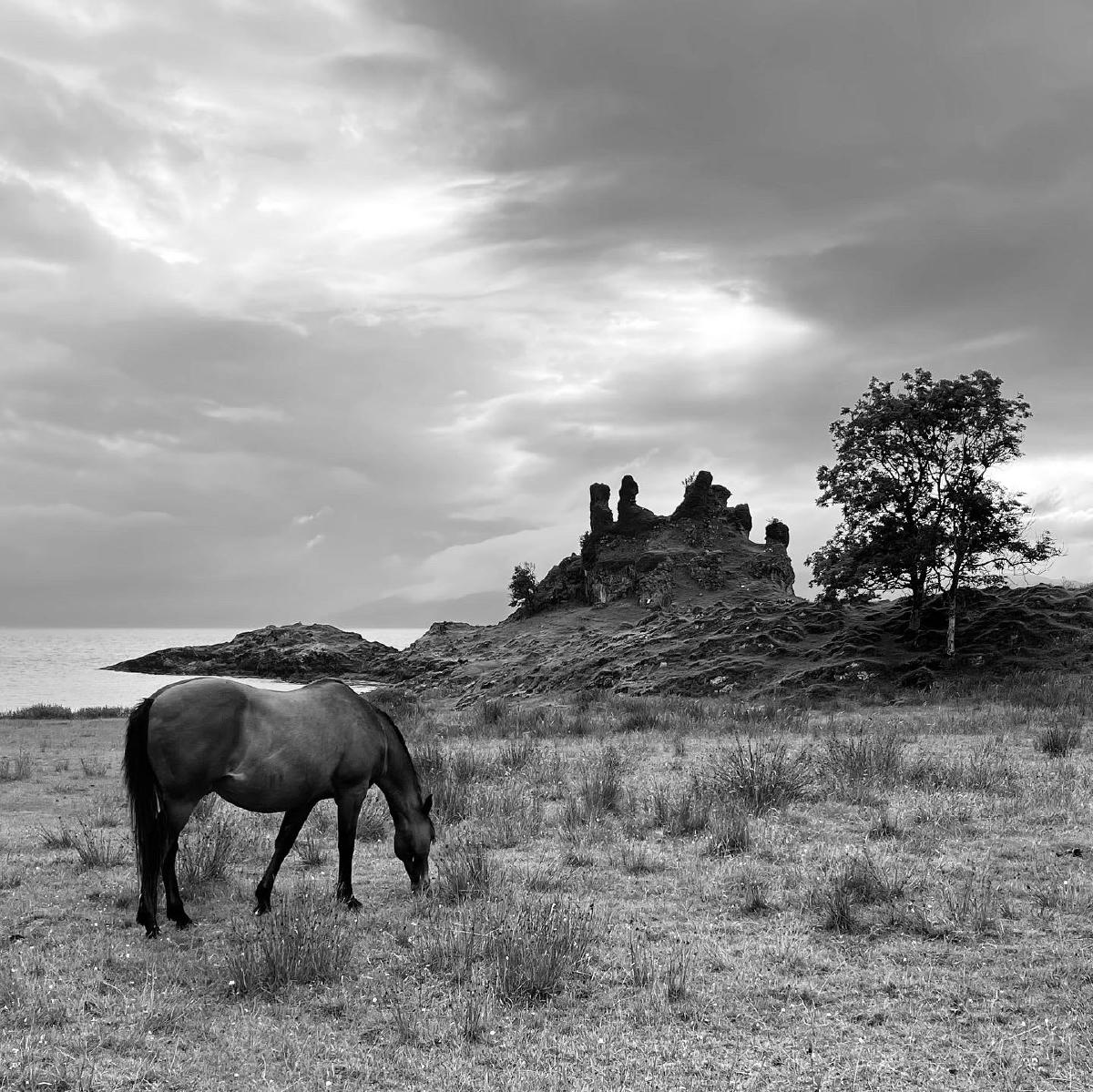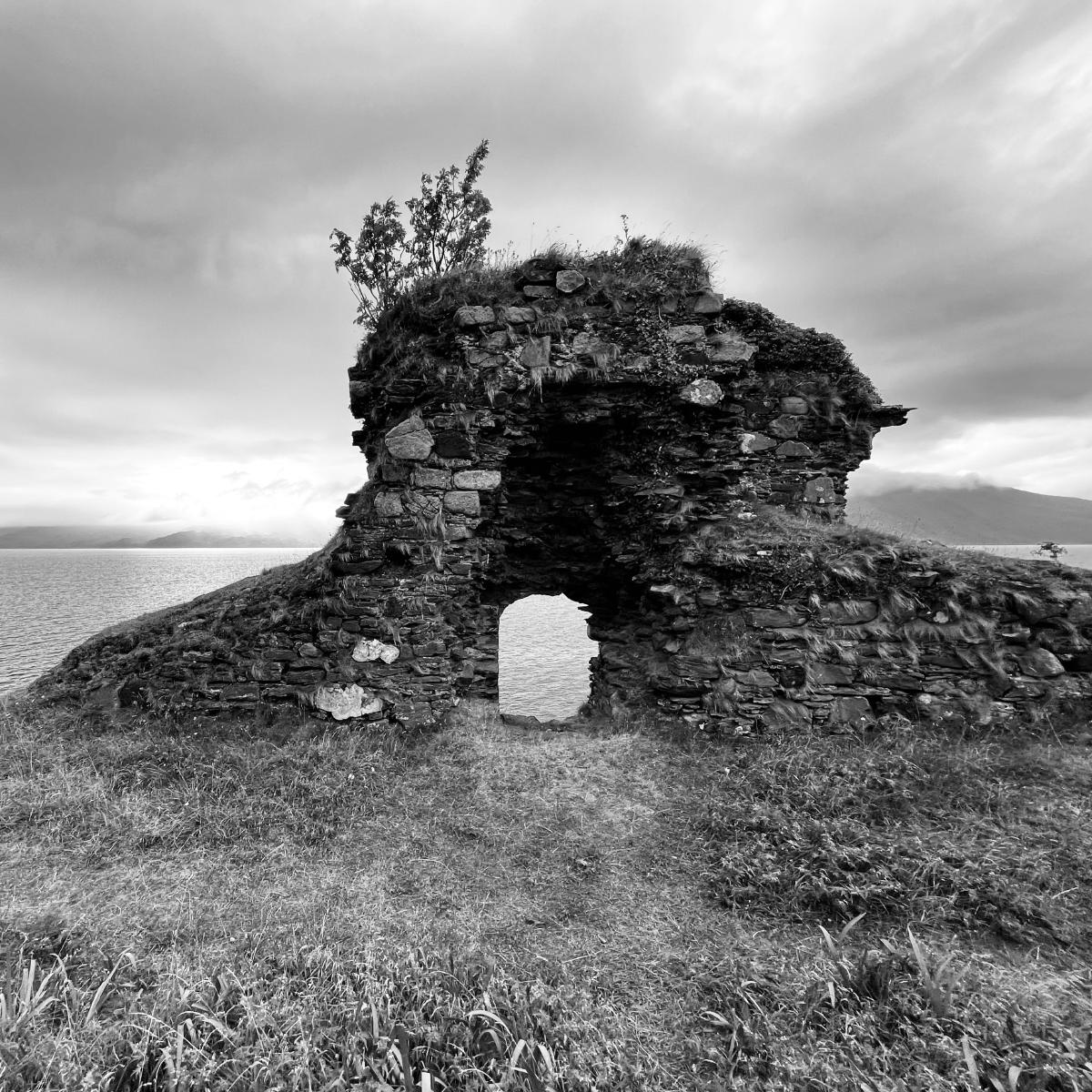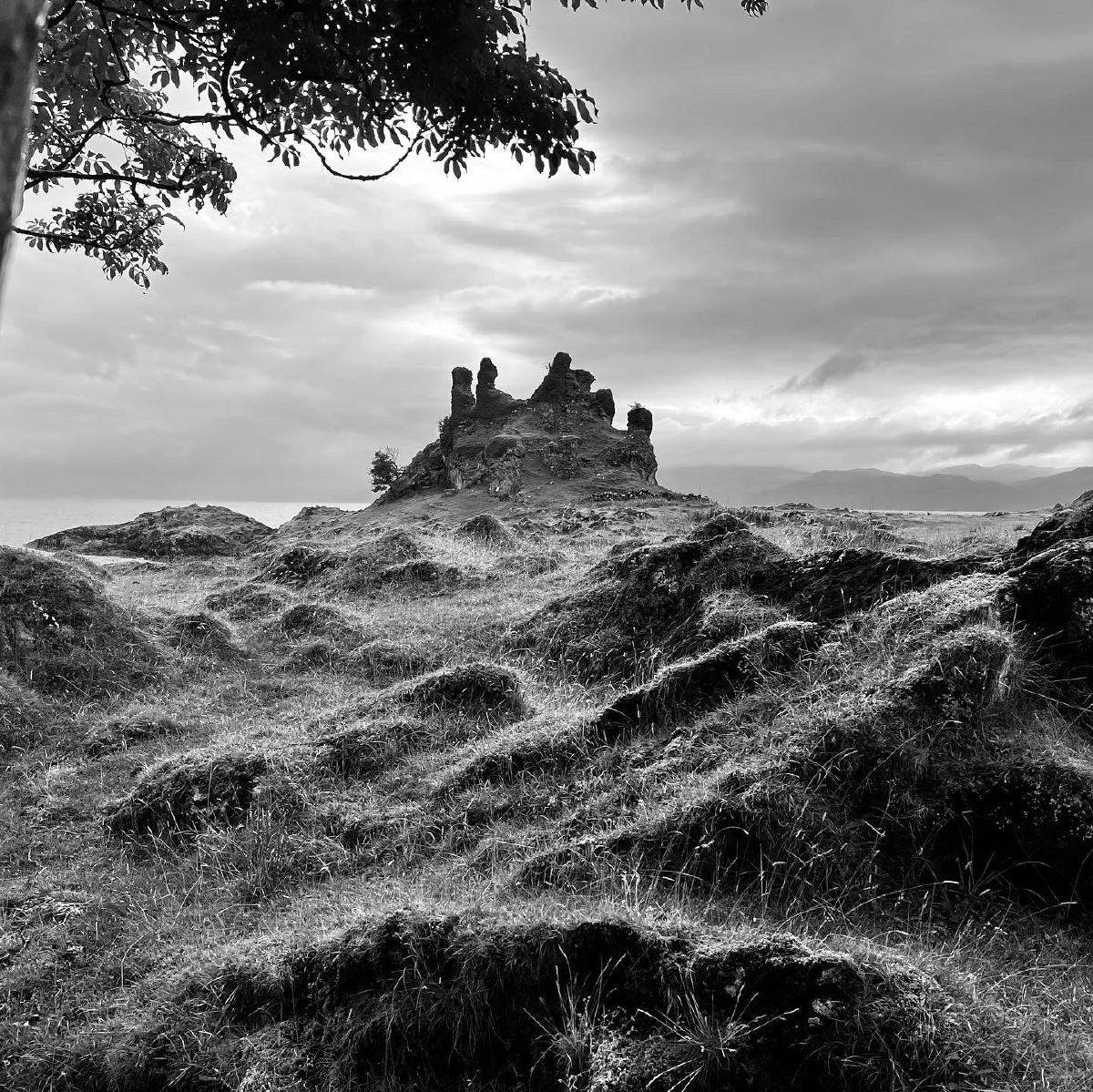On the Isle of Lismore, far off the beaten track, is the shambling ruin of Castle Ceoffin. It resembles, more than anything, a gnarled, groping hand reaching skyward.
The crumbling ruin you see at the top of this page is Castle Ceoffin. Said to have been built in the 13th Century by the McDougalls of Lorn, possibly on the site of a previous Viking stronghold.
Local tradition has always associated Coeffin with a legendary Norse prince called Caifean. The ghost of his sister Beothail was said to haunt the castle until he freed her by taking her bones back to Norway where she was buried beside her lover. The story is captured beautifully here by Walter Marshall MacDougall:
In the days when Coeffin was a Norse stronghold, Beothail of the golden hair lived there. She was very much in love with a young Viking warrior. When in far-off Lochlann [Norway] this warrior was killed, Beothail grew pale with her grief and died.
Then in the wind that buffeted the walls of Coeffin came the pleading voice of the dead maiden begging her father and brother to carry her bones to Lochlann. Finally, her bones were washed in the sacred spring of Saint Moluag at Clachan and, thus blessed, were carried to where Beothail’s lover lay buried.
Still the voice came upon the ceaseless winds of the Lynn of Morvern. A bone was missing, left behind in the well. A search was made, and the bone was found. It too was carried to Lochlann. Then the pleading ceased, though the restless winds often sound a maiden’s sigh around the walls of Coeffin.
An excerpt from ‘Journeying in MacDougall Country‘ by (Walter Marshall MacDougall), helpfully transcribed by The Hazel Tree

Our trip to Castle Ceoffin
It’s the 4th August 2021. After spending the night on the Isle of Mull, we boarded a ferry to Lismore. The weather up until that point had been perfect, but that evening on Lismore, the skies darkened and we took shelter briefly in the Lismore Heritage Centre until conditions cleared.
This trip was an overnighter, in a quaint little bothy by the shoreline. No electricity, just a stove and a few oil lamps. And on the itinerary was a ruin we only knew as Castle Ceoffin.
It took a little while to locate the castle. It’s not well signposted, and we ended up in someone’s farmyard realising we’d hit a dead end. After stowing the car beside a tree on an old laneway, we headed across the fields, past herds of highland coos, looking for some old stone that would signal that we’d found the place.
Eventually, as the light was beginning to fade, the castle appeared on the shoreline. A beam of light was breaking through the murky sky, falling on the castle like a spotlight. We ambled down a steep and frankly hostile track that took us to the shoreline, eyes fixed on the oddly shaped ruin that was getting closer. As the ground levelled out, we came upon two horses grazing by the shoreline.

The scene sticks with me even now. There was a tranquillity about the place. Something about it evoked a sense of reverence. And I’m not a religious or spiritual person but the shores around Ceoffin brought about such a sense of peace that a hush descended on us for a while. Even close up, the ruins barely resembled a castle. Or if they did, it was a formless, almost melted shell. With the exception of one remaining window facing out to sea, there was little to suggest this was a castle.

For one reason or another, that day I was shooting with the noir filter on my iPhone. Photography purists, look away now. But for some reason, the filter matched the melancholy mood of the place. I was so satisfied with the handful of photos from Castle Ceoffin that I made prints and have them hanging in the house. That’s a rare occasion.
Lismore is slightly overshadowed by larger or more characterful islands in Argyll, but our stay at the Sailean Bothy was restful and idyllic - I’ll always have fond memories of feeling completely recharged by the experience and that another 3 days would have been perfect just on that island to feel fully immersed. If you wanted to drop out of society altogether, with no wifi and just the bare essentials, there is no better place.
